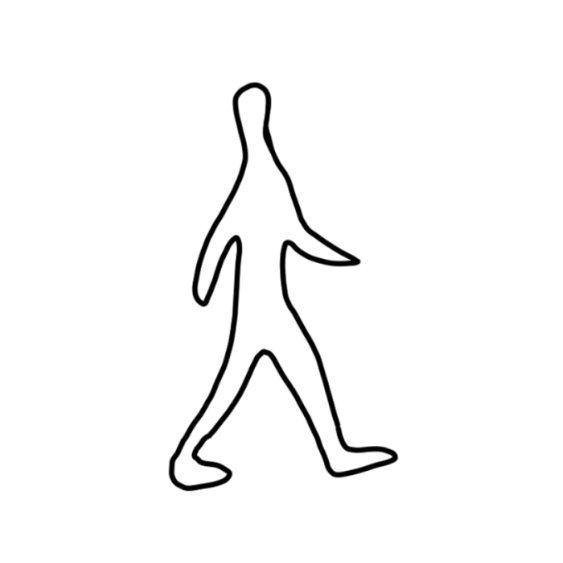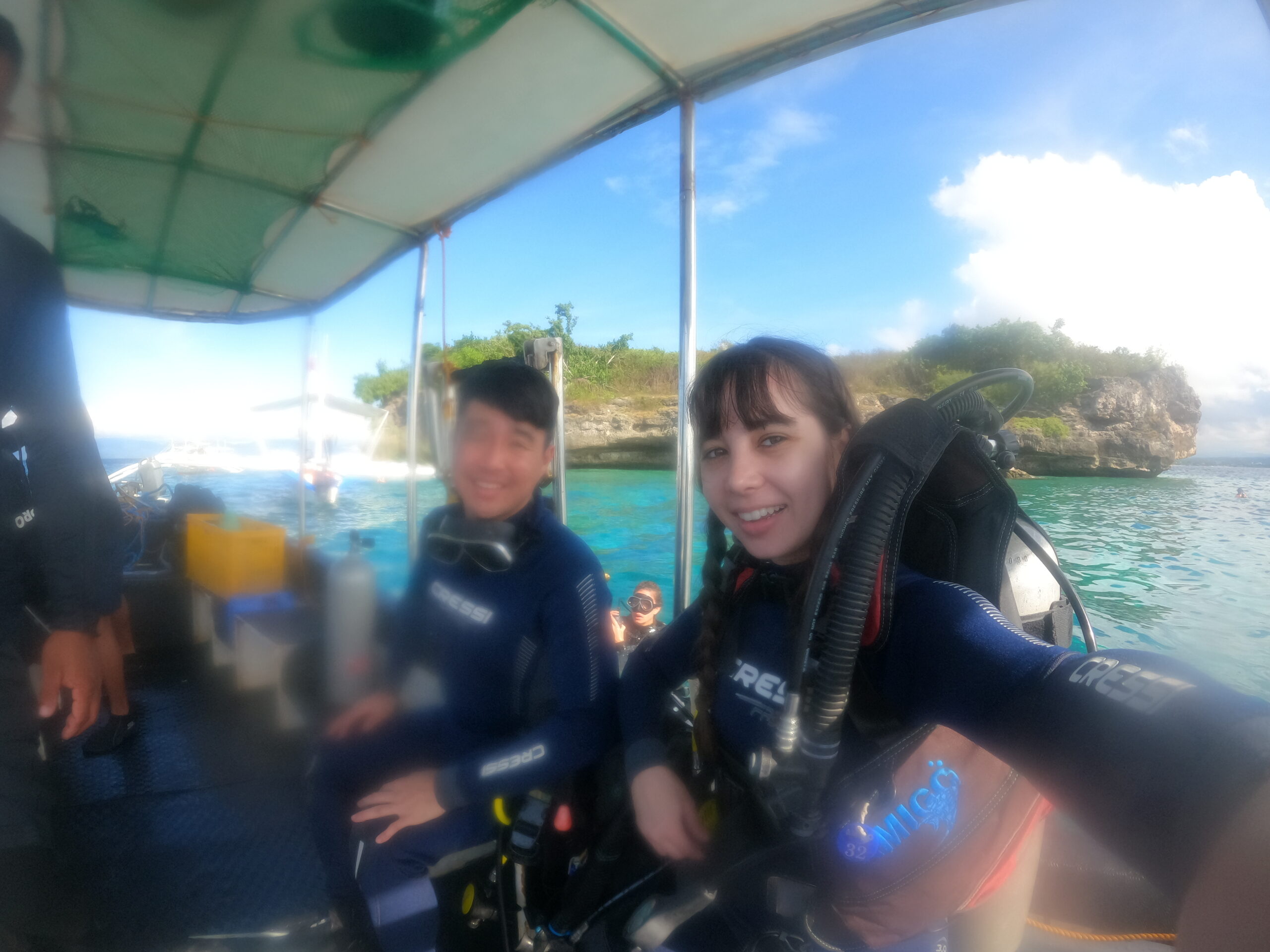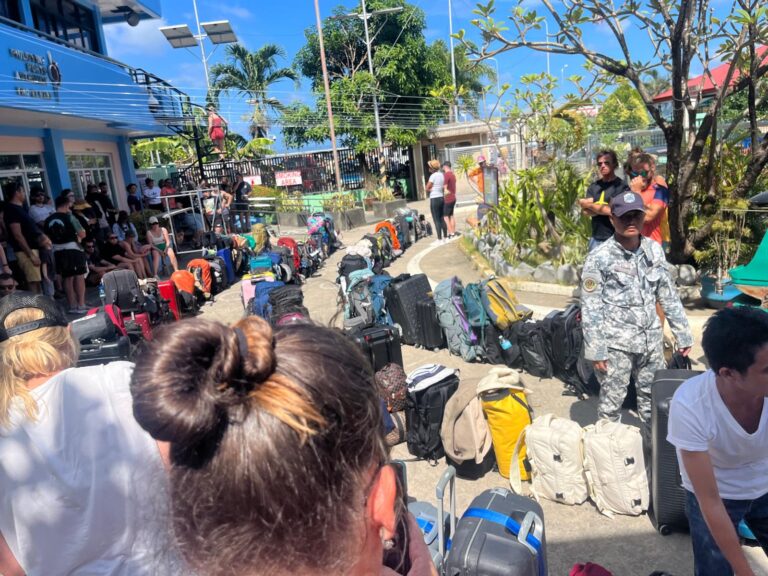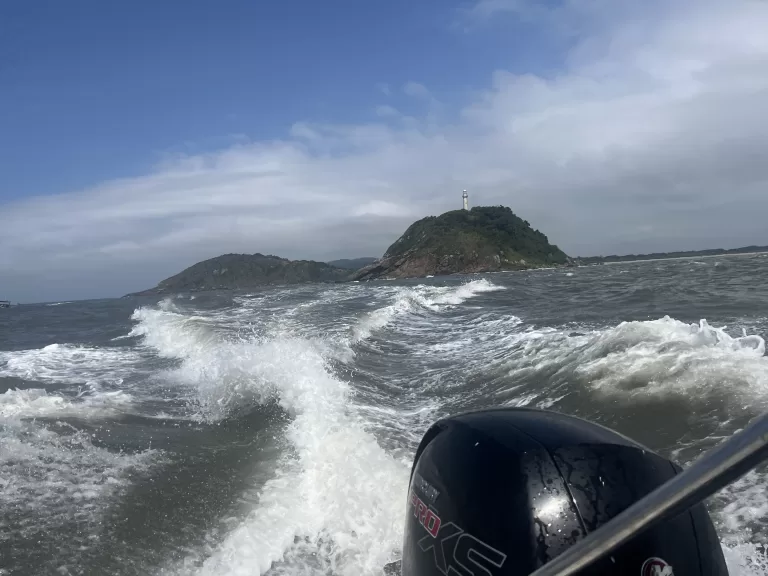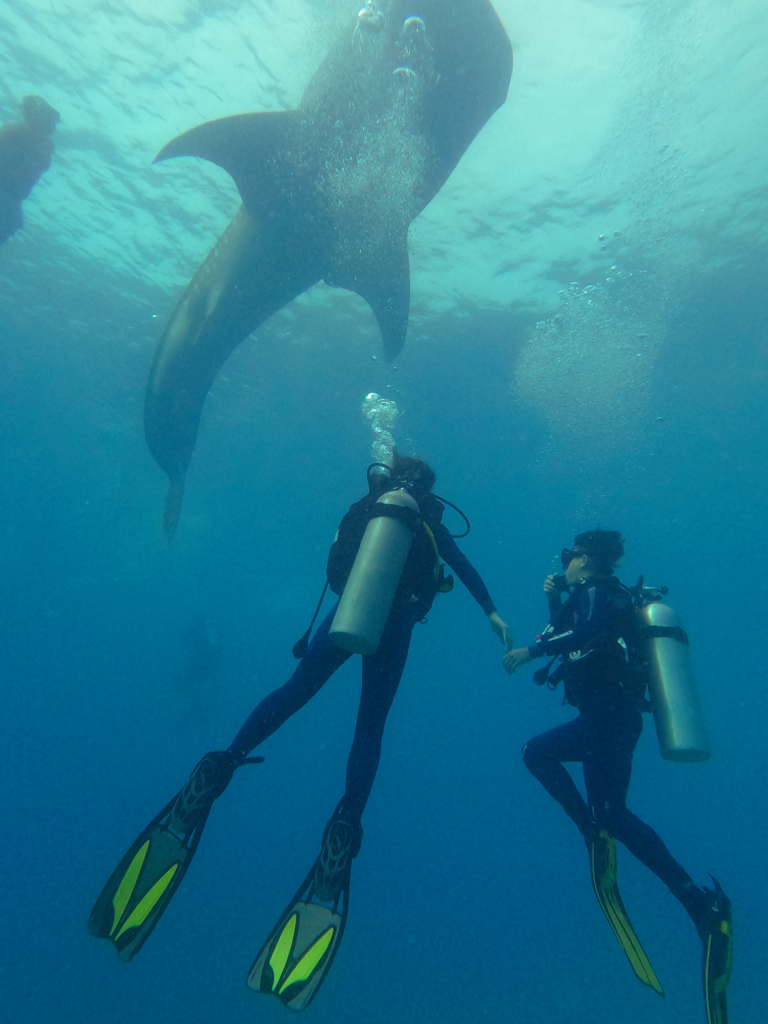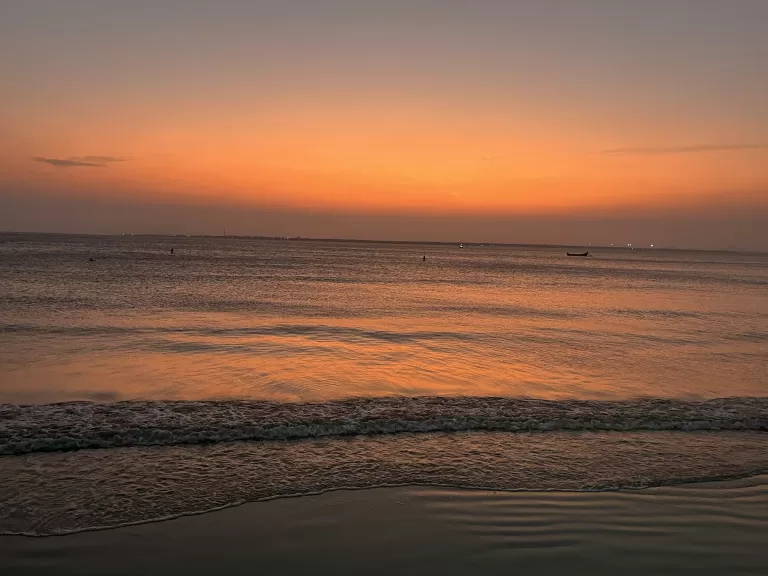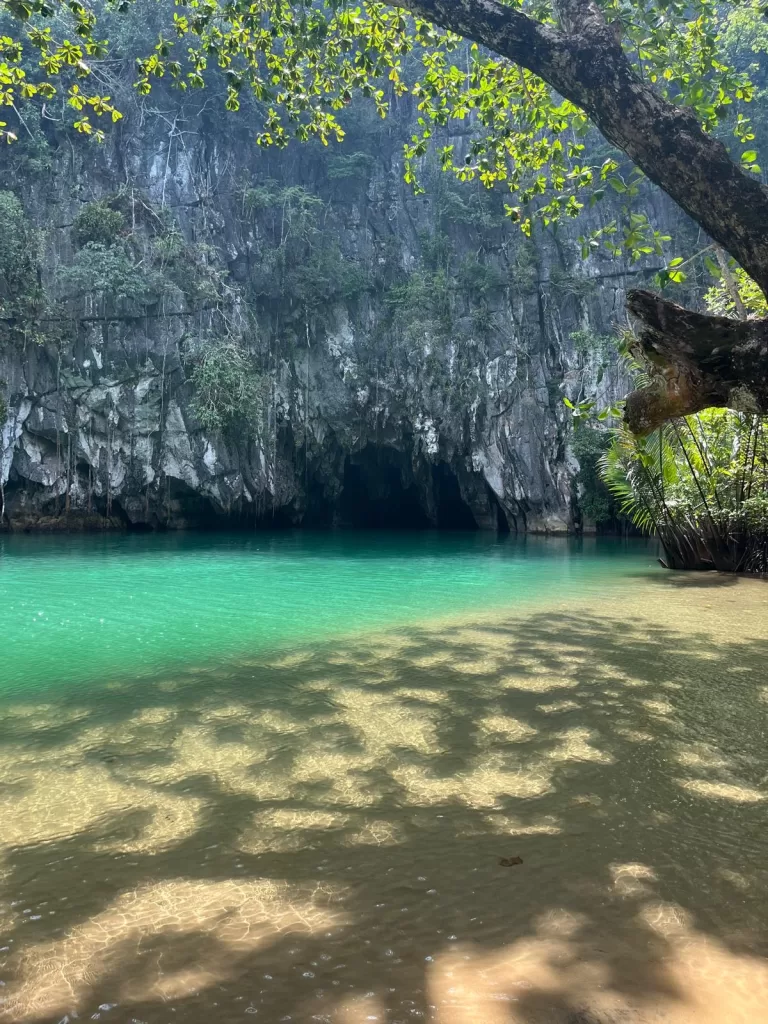Scuba diving certification in the Philippines: newbie to advanced diver in two weeks
Are you dreaming about learning to dive in the Philippines? Interested in becoming an advanced diver quickly? In this post, I’ll take you through my incredible journey from being a complete newbie to becoming an advanced diver in just two weeks while traveling in the Philippines. This is your ultimate guide to learning to dive in the Philippines, including all you need to know about diving courses, the best dive shops, gear recommendations, and my personal experience.
Disclaimer: This page may contain affiliate links. If you use these links to buy or book something I may earn pennies at no additional cost to you!
Why the Philippines is the best destination to learn to scuba dive
I chose the Philippines for its affordability and because it is an English-speaking country, making communication easier.
When I arrived in the Philippines, I discovered the country offered much more than just stunning diving and affordability. The warmth and kindness of the locals were paramount for my learning and comfort under the sea!
The delicious food and warm waters made the Philippines the perfect place to start my diving journey—an aspect I came to appreciate even more after diving in the colder waters of Brazil and Mexico.
Diving Courses: What You Need to Know
Important Considerations
Before starting your diving journey, it’s crucial to know that if you have any health conditions, you might need a doctor’s note. Check out this form to see if you need to see your Dr. before diving with a PADI dive shop.
Also, in the Philippines, we had trouble paying for diving courses with a credit card, so we typically had to use PayPal or Wise, which can incur fees. They do accept cash payments, but we didn’t have cash on us at the time. Be mindful of this payment limitation, and make sure that your PayPal and Wise accounts are set up before you go on your trip!
Choosing the Right Dive Shop
When it comes to getting certified, make sure to search for locations with calm waters and dive shops with stellar ratings! Diving conditions and instructor preparedness are the two most important factors when it comes to learning to dive.
To start our open water diver course, we chose a dive shop called Sidive in Cebu City. Cebu City is one of the most common and affordable ways to get to the Philippines and presents ideal diving conditions for beginners. We don’t regret choosing this location to kick off our diving adventure.
Pre-Course Communication: I found Sidive online and chatted with them via WhatsApp and email about the course. We provided a payment of about 100 USD per person as a guarantee and received the PADI e-learning the same day. Since I had a depression diagnosis and was on medication, I needed a doctor to fill out a form stating I was fit to dive. Simon at Sidive guided me through this straightforward process.
Completing the PADI open water course
The PADI Open Water Course has three main sections:
- E-learning: Even before going on your diving trip you can complete required readings and quizzes to learn the basic concepts about scuba diving!
- Confined water training: In a pool or calm and shallow area of the ocean you learn basic diving skills
- Open water training: In real open-water diving conditions, you test the skills learned in confined water
Let’s deep dive into my experience with each of these sections as part of my scuba diving training in the Philippines!
Working from home: The PADI E-learning Experience
The PADI e-learning is the classroom section of the open water diving course. We learned a lot of important concepts from home before even flying to the Philippines. Given how dangerous diving can be, this e-learning must be taken seriously. I recommend you give yourself at least two weeks to work on it a bit every day. If you’re in a rush, you could complete it in a day or two, but remember: it contains life-saving information, so take your time!
First time diving in the Philippines: confined water training
Once we arrived in Cebu City, the only theory thing left was a quick multiple-choice in-person test to ensure we grasped the most important concepts. Then, we started learning how to set up gear and went into a shallow, waveless part of the ocean for our “confined water” training.
In the confined water training, we learned all the essential skills for diving, such as:
- Taking out water from our mask underwater (mask clearing technique)
- How to breathe underwater
- How to equalize our ears (the hardest part for me!)
- Using the BCD (the diving life jacket) to go down and up
- Using alternate oxygen sources
- Safely surfacing if we run out of oxygen
- Underwater communication
- Rescuing a troubled diver
- … much more!
Open Water Training
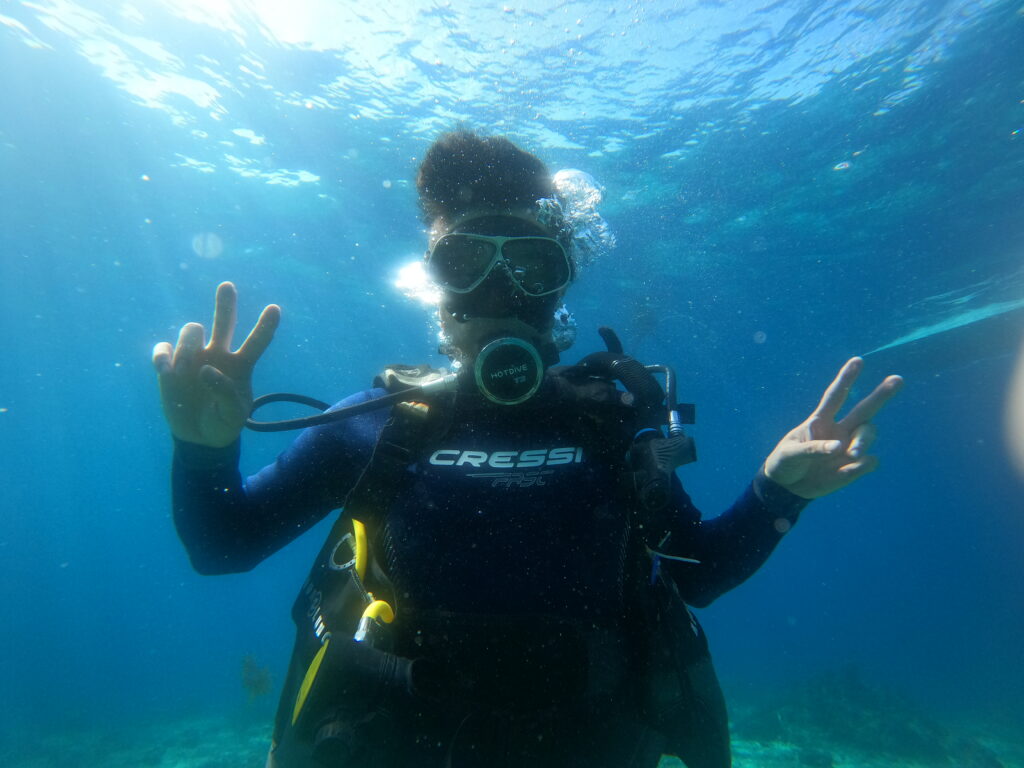
After learning the skills in confined water, we swam into the open water to practice these same skills. The course was surprisingly easy. I was worried I wouldn’t be able to dive, but pretty much anyone can do it! Even if you don’t know how to swim, you can still dive. Diving terms and internet forums make it sound more challenging than it is. Trust me, it’s easier than learning to ride a bike—I still can’t ride a bike, but I became a certified diver after just two days of training!
Fun Dives after certification
We loved learning to dive so much that we scheduled a few fun dives during our stay in the Philippines. After about five fun dives (including two in Oslob), we saw a significant improvement in our skills and felt confident enough to try out the advanced diving course just a few days after our initial certification.
Advanced Diving Course in Coron: Reggae Diving
For our advanced diving course, we headed to Coron. Diving in Coron was unique due to the numerous shipwrecks from World War II. It was fascinating to see how these ships turned into beautiful homes for marine life. Some shipwrecks are in deep areas or have strong currents, making Coron an excellent place to challenge ourselves and earn our advanced diver certification.
There, we found the coolest dive shop: Reggae Diving. Reggae Diving is absolutely the best dive shop in Coron (and I’d not be surprised if they happen to be the best in the world)!

Their reggae-themed decor, playlist, and even their transportation were all good vibes. They picked us up in a red, green, and yellow tuk-tuk, took us to a similarly themed pier, and then to a boat called “Three Little Birds”. They even gave us cool reggae-themed t-shirts!
PADI Advanced Diver and Nitrox Courses
We booked a combo of the advanced diver course and the nitrox diver course. Nitrox is a different mix of air that allows you to stay at larger depths longer but requires certification due to the risks.
We booked our courses at the last minute and had to complete the e-learning during our entire time in Coron, even on boat rides with the internet! We completed both courses in just two days.
What Gear Do You Need for Diving?
Do I Need to Buy Any Gear Before Heading to a Diving Course?
The answer is simple, especially if you’re diving in the Philippines: No. All the dive shops we encountered had equipment rental included in their costs. While this isn’t true everywhere, I recommend using the dive shop’s equipment during your open water course. The PADI e-learning will try to sell you lots of gear and courses, but remember, PADI is a business.
What I Recommend You Buy:
- A Wetsuit: Good wetsuits run about $100. I invested in one because I was grossed out by used wetsuits. Check with your dive shop about the recommended thickness for the water temperature you’ll be diving in.
- Diving Boots: Soggy, used boots can be unpleasant. A good pair costs around $30 and is worth it.
- Goggles: Prescription goggles are a lifesaver if you wear glasses. They also prevent fogging, a common problem with rented gear.
- An action camera: We spent so much on GoPro rentals that we could have bought one! In the Philippines, rentals are about $50 a day. We already purchased a DJI Osmo Action 4 to take on our next diving trip!
Things We Saw While Diving in the Philippines
In Cebu (Cebu City, Moalboal, and Oslob), we saw:
- Tons of turtles
- Schools of sardines
- Schools of fish
- Rays
- Colorful corals
- Eels
- Clams
- Sea stars
- Whale sharks in Oslob (there’s a whole video on my experience diving in Oslob and why I don’t recommend visiting there)
In Coron, we saw:
- Shipwrecks
- Turtles
- Schools of fish
- Clams
- Tons of corals
Why I Started Diving
My journey into scuba diving started with a quest to find a new hobby to help me recover from depression. Two of my happiest memories involved swimming with marine wildlife—whale sharks in Cancun and dolphins in Egypt. Therefore, scuba diving became the obvious choice. One late night, I found the energy and courage needed to book a PADI Open Water Course and a trip to the Philippines.
Conclusion
Diving in the Philippines was an unforgettable experience, transforming me from a newbie to an advanced diver in just two weeks. If you’re considering learning to dive, the Philippines is an excellent place to start. The affordability, warm waters, and friendly locals make it a top destination for aspiring divers. Remember, the journey is as important as the destination, so take your time, learn thoroughly, and enjoy every moment underwater.
To plan your Philippines diving trip, check out other helpful posts:
- Philippines Itinerary: 2-weeks diving and Traveling
- My depression recovery story: How scuba diving accelerated my treatment
- 4 reasons Why You Should Think Twice Before Visiting Oslob for Whale Sharks
If you found this post helpful, please share it with others who might be interested in diving.
Happy diving, everyone!
